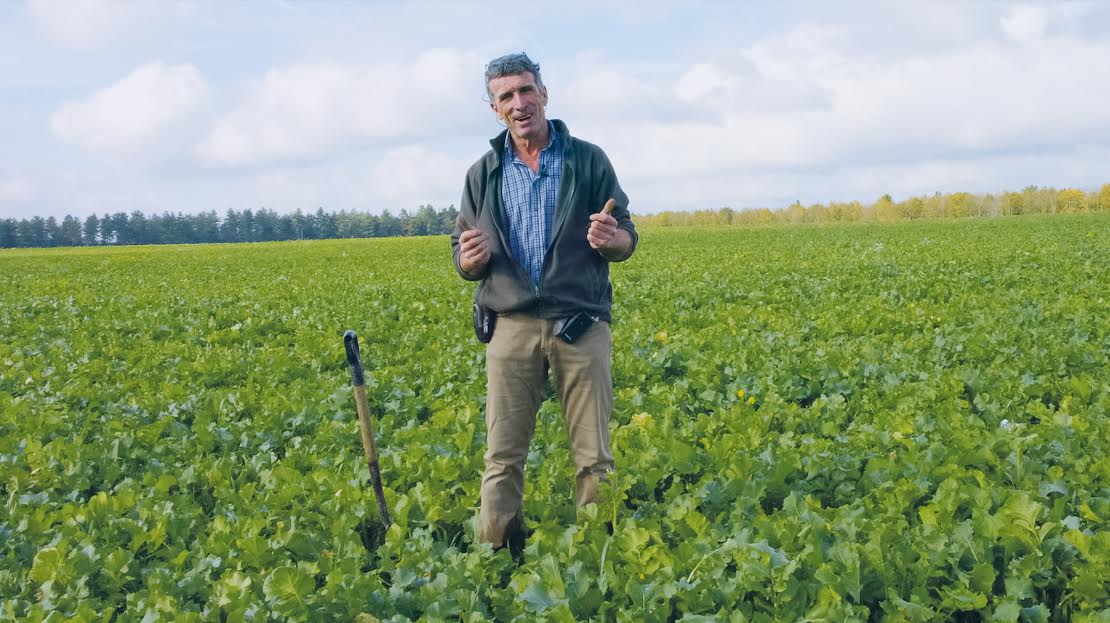

‘My philosophy is that the first major nutrient in crop production is not N, P or K, but carbon,’ says Julian Gold, Farm Manager of the Hendred Estate in South Oxfordshire. ‘So the first thing I do is feed the soil before I even think about the crop. Cover crops are a really important part of my carbon capture strategy as they capture free carbon from the sun. Well almost free, all you have to pay for is the seed!’
The seeds Julian uses for carbon capture are cover crops. ‘It means that in the winter, rather than having bare soil, I’ve got a photosynthesising crop which is sequestering carbon into the system.’
Julian has been working on the Hendred Estate for 25 years now and has developed a wide rotation, based on oilseed rape, winter wheat, spring barley, spring beans back to winter wheat and then winter barley, with cover crops grown before the two spring crops.
The key to a good cover crop is early establishment. The mix is direct drilled with the farms 10 metre Köckerling drill as soon as the crop is cut. The width of the machine ensures Julian can cover large areas quickly.
Julian uses a diverse mixture of species including short term grasses, winter cereals, brassicas and legumes. ‘We try to keep the brassica inclusion low, to reduce issues of disease or pest carry-over with the OSR crop in the rotation, but aim to make the mix as complex as possible.
We include legumes which are very important as they harvest free nitrogen from the atmosphere. One important factor is the cover crop is treated like a regular crop. It’s drilled, rolled and fertilised to get it off to the best start possible.
The key consideration behind this cover crop is that it provides as many grazings as possible from late summer to early spring. Julian aims to graze both before and after Christmas, as the sheep are mob stocked they trample in 50% of the biomass during the grazings in autumn and winter and the areas just grazed are back-fenced, to encourage maximum regrowth.
Including winter hardy species like Italian ryegrass and winter cereals like oats and rye, means the mixture regrows once grazed, reducing the likelihood of bare soil later in the year and offsetting the seed cost by providing as many weeks of grazing as possible.
The penetrating tap root of the fodder radish helps break up layers of compaction in the soil profile, while the stubble turnips and forage rape provide good quality forage, with regrowth regularly seen after grazing the forage rape, and the turnips filling up available space at the base of the sward.
Despite being an annual, vetch has good regrowth characteristics when grazed young, fixing nitrogen in warm soils and keeping the ground covered, along with crimson clover.
These bespoke cover crops Julian has been planting over the last 4-5 years have all been supplied by Cotswold Seeds.
‘They provide a really useful service because rather than having to have something off the shelf, they’ll build a mix to fit my criteria. I talk through exactly what I want in the mix and they offer advice and build the recipe. They can also deliver it in 1/2 ton bags which I find very useful compared to messing around with lots of small bags.’
Julian’s philosophy of building soil health has been very successful. ‘After ploughing one of the worst fields on the farm when I came here in 1992, it took about a week to power harrow it and we struggled to get a seed bed, but now it’s probably the best field on the farm.’
The cover crop also directly benefits the spring barley. ‘High pH chalk soils like ours hold onto the nutrients quite tightly and it’s difficult for the crop to access certain minerals, particularly phosphate. But with a cover crop growing over the winter it’s taking nutrients out of the soil into its plant material and this becomes more available to the following spring barley crop.’
Julian’s soil improvement work on the Hendred Estate quickly attracted the attention of AHDB, which recruited him as one of their first tranche of Monitor Farms, a network set up to improve knowledge transfer between farmers, so now Julian is talking to other farmers about his rotations, soil health and cover crops.
‘The use of cover crops should be compulsory because nature doesn’t like bare soil,’ Julian says. ‘If soil is left bare, it leads to erosion and starves the soil biology. If you don’t use cover crops you are just wasting the sunshine.’
Date Posted: 6th March 2019



